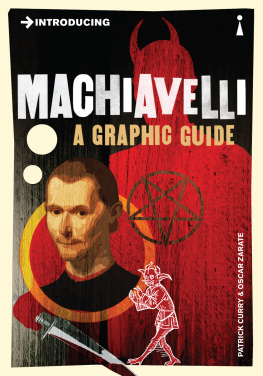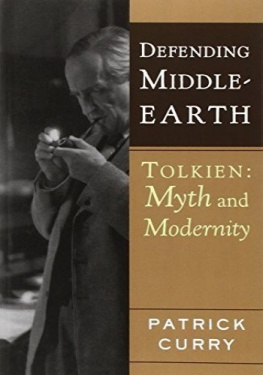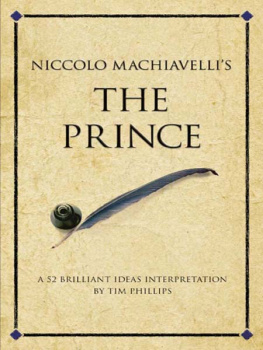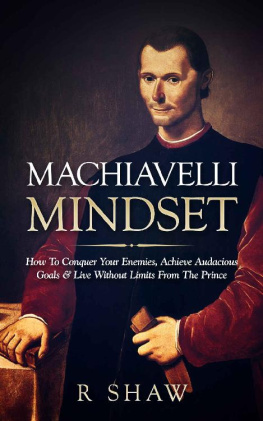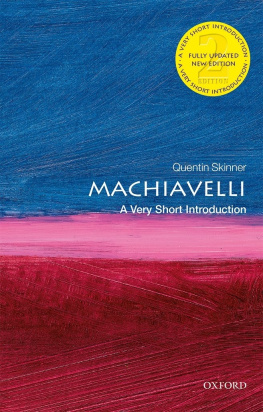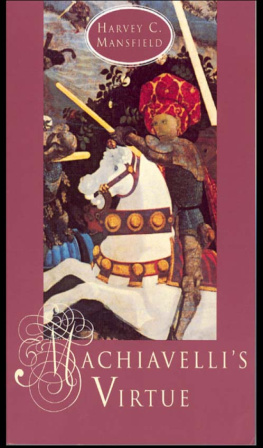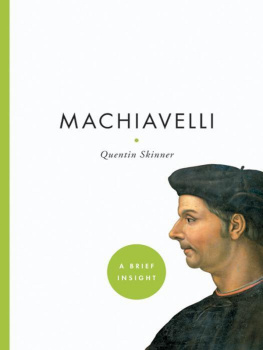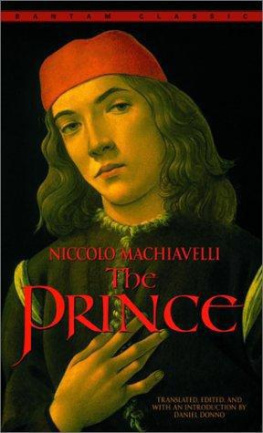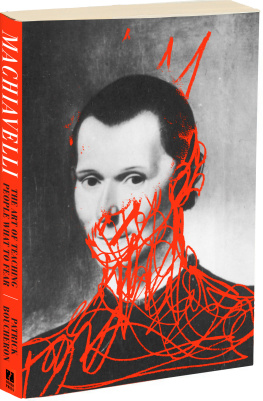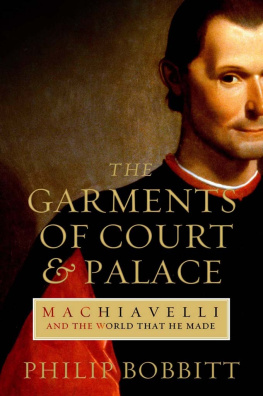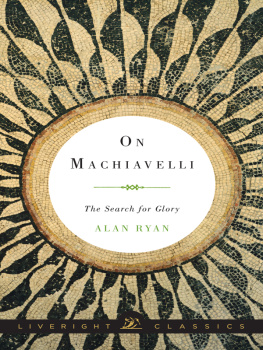Fittingly, one of the people Russell probably had in mind, Benito Mussolini, praised it. He had a strong view about whom the new Prince was meant to be and wrote a foreword to a new edition.
This undoubtedly explains the response of Henry Kissinger, for several years the power behind the presidential throne in American politics, to an interviewers suggestion in 1972 that he was a Machiavellian: No, not at all! Was he not influenced by Machiavellis ideas to at least some extent?
As we shall see, Machiavelli had his fans too, and many of these, like the philosopher Francis Bacon, were not thugs.
WE ARE MUCH BE HOLDEN TO MACHIAVELLI AND OTHERS, THAT WRITE WHAT MEN DO, AND NOT WHAT THEY OUGHT TO DO
NICCOLO MACHIAVELLI WROTE ABOUT THE WORLD WE LIVE IN, MAN, THE WAY IT REALLY IS, WITHOUT ALL THE BULLSHIT.
But Machiavellis bad press continues today. The Prince, says the Guardian newspaper, is the ultimate handbook in political expediency. And the latest edition of Chambers English Dictionary has Machiavellian as an adjective, meaning politically cunning and unscrupulous, seeking power or advantage at any price; amoral and opportunist.
So what was Machiavelli: evil genius or brilliant political theorist? And what does he have to tell us today? To answer that you have to know who he was, and what he wrote in relation to his own time and problems.
Renaissance Florence
The golden age of Florence was in the 15th century. Florences wealth became legendary. Its coin, the florin, was respected everywhere, and its merchants conducted business far and wide, first in the wool industry and then in silk and trade with the East. One of the richest and most successful families was the Medici. Originally from the Mugello valley, they amassed great wealth as merchant bankers and became bankers to the Papacy. Soon their ambitions extended to politics, the Papacy itself, and the rulership of their native city. But the Medici were also renowned as generous patrons of the arts and humanities. They were no petty tyrants.
Emblem of Florence
This combination of commerce, culture and enlightened despotism made Florence the Renaissance equivalent of Athens in classical antiquity, another turning point in European culture and civilization.
Thanks to the patronage of wealthy merchant families like the Medici, in a time of almost unprecedented creativity and optimism, Florence became the principal centre for Western arts and sciences. Around 1420, Filippo Brunelleschi designed the huge dome of the cathedral of Santa Maria del Fiore, near the Tower by Giotto, and, together with Ghiberti, oversaw its construction. It was completed in 1436, although the lantern was not finished until after Brunelleschis death. Along with Alberti, he also developed linear perspective.
Discoveries in anatomy, combined with artistic creativity, distinguished the sculptures of Donatello and the paintings of Piero della Francesca. Botticellis Birth of Venus and Primavera exquisitely expressed the new interest in pagan classical subjects.
Leonardo da Vinci was a Florentine and in his life and work perhaps best exemplifies its intellectual curiosity, humane scepticism, and sensitivity. He rubbed shoulders in Florence with Michelangelo, the giant of Western sculpture and painting, as he developed his mastery of the human form.
And, incredibly, the still younger Raphael from Urbino, but painting in Florence visited and watched both mens work in progress.
At the same time, ideas about the frontiers of the known physical world were also being challenged. Christopher Columbus set sail on his first historic trip in 1492. Shortly afterwards, he was followed by a Florentine, Amerigo Vespucci, who gave his name to the Americas.
PATIENCE, COMRADES: LAND IS JUST AROUND THE CORNER!
THE PARTYS OVER THE ITALIANS ARE COMING!
HMMMAMERICA WHAT A GOOD NAME FOR A NEW WORLD!
In philosophy, Cosimo deMedici commissioned Marsilio Ficino to translate the mystical writings of Hermes Trismegistus and Platos dialogues into Latin. Ficino upturned the old AristotelianChristian synthesis with his translations. Lorenzo the Magnificent continued this support, underwriting the foundation of the Platonic Academy, Ficinos own work, and the short but extraordinary career of Pico della Mirandola, whom Machiavelli described as a man almost divine. Picos meditations on the dignity of man, combining Christian theology, Platonic philosophy and hermetic magic, set the seal on Renaissance humanism.
What is Humanism?
The word comes from the Latin

